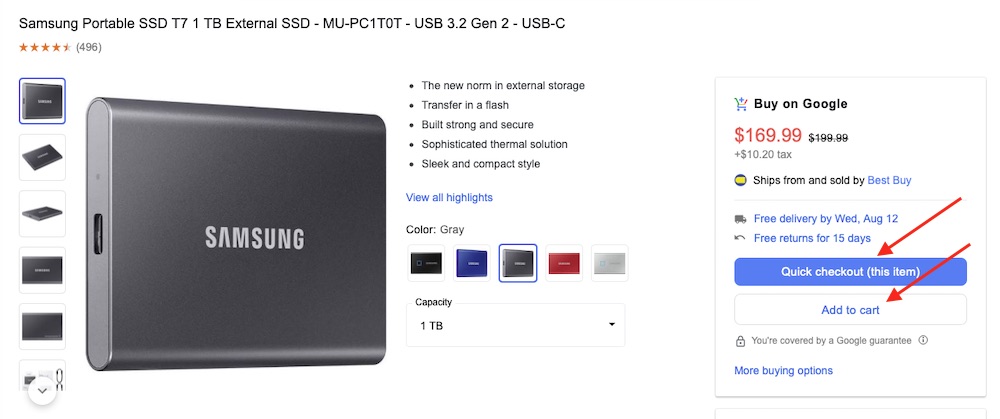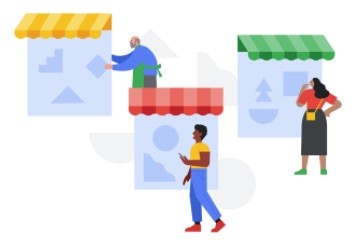Google Shopping has made its second significant change in the last few months. The first change was implementing free Google Shopping listings. The second is opening the “Buy on Google” program to all merchants, commission-free.
“Buy on Google” allows consumers to purchase products from merchants without leaving Google. The program will roll out to all merchants by early 2021, according to Google.
Consider the example below of the “Buy on Google” process. After searching “hard drives,” a consumer can access the “Shopping” tab and click the “Buy on Google” option.

After searching “hard drives,” a consumer can access the “Shopping” tab and click the “Buy on Google” option.
—
Clicking the first listing (“Samsung Portable SSD T7” external drive) will produce a product page. Consumers can then click “Quick checkout” or “Add to cart,” log in to Google (if they haven’t already), and fill out delivery details and payment info.

Once on the product page, consumers click “Quick checkout” or “Add to cart.”
Aside from being commission-free, changes to the program include:
- Linking to your payment provider in Merchant Center. Formerly, Buy on Google advertisers could use only PayPal to process payments from consumers. Shopify Payments is now an option, with more payment processors to come. Merchants will need to link their payment processor with Merchant Center.
- Handling customer support directly. Google previously provided exclusive support to Buy on Google consumers. Those support queries, such as order or shipping problems, will now initially go to merchants, who must provide an appropriate customer-support email address in Merchant Center.
- Product returns. Google can process returns from consumers, or merchants can do it themselves. If Google does it, merchants will link to their shipping carrier in Merchant Center. The carrier will then bill merchants directly.
- Amazon product feeds. Another change is the ability to upload the same product feed for Amazon into Merchant Center. Google will automatically map the fields. This is a huge value-add in my experience, as the technical product-feed glitches can be challenging.
Consumers who purchase through Google receive a guarantee against incorrect or late shipments and not receiving a refund after returning items. Google encourages consumers to contact the merchant first. If no response after two days, Google provides Shopping support.
Concerns
Audience data is not available to merchants who use “Buy with Google.” If they tag their site with Google Ads or Analytics pixels, merchants can create audiences and set up remarketing campaigns. Merchants can also create lookalike audiences to expand their reach. But now, consumers will purchase directly on Google. Merchants cannot remarket to them.
Consider, also, brand implications. The entire experience is now on Google. Consumers’ product research and subsequent purchase transactions occur through Google — not the merchant’s site. Likely this will diminish merchants’ branding (much like Amazon’s marketplace).
Additionally, participating merchants who submit incorrect product information and perform poor customer service risk suspension by Google.
The Big Picture
Google’s marketplace quest continues. Though it has been live for a while, “Buy on Google” is now available to all merchants. By not paying commissions, merchants can potentially increase advertising budgets. Google Shopping is already a top revenue source for many companies. “Buy on Google” is a logical next step.







